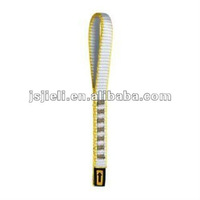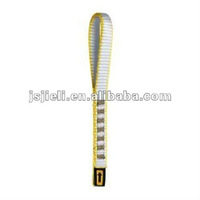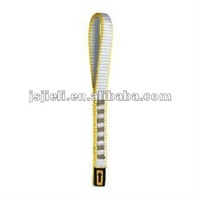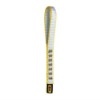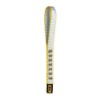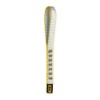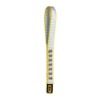- Fishing Lures[7]
- Fishing Lines[10]
- Other Fishing Products[10]
- Lifting Sling[7]
- Nonwoven Fabric[7]
- Other Sports & Entertainment Products[10]
- Other Yarn[2]
- Aramid Fabric[2]
- Safety Gloves[10]
- UHMWPE Fiber[7]
- Other Fabric[7]
- Kites[10]
- Fishing Bags[1]
- Contact Person : Mr. Zheng Bin
- Company Name : Jinhu Jeely Sport Products Co., Ltd.
- Tel : 86-517-86853773 13852352792
- Fax : 86-517-86905808
- Address : Jiangsu,Huai'an,NO225.Yuanlin Avenue,Jinhu City,Jiangsu Province,China
- Country/Region : China
- Zip : 211600
Climbing Express Dyneema Sling
Climbing Express Dyneema Sling
Material: Netherland DSM SK75 dyneema and nylon mixedShaped:flatMajor axis: 24kNLength: 11,17,25 cm available and can customized as per customers' requirementsCertification: Meet CE1019 EN566Sling : 100% Dyneema 24kN 11,17,25 CM Avaiable Meet CE1019 EN566
Here is what to consider when buying a climbing sling or runner:What Are You Using it For?When checking out slings and contemplating that full-rack overhaul, the most important thing to consider is what exactly are you going to be doing with the slings you buy. A climber primarily ticking off those long alpine routes will be looking for a different sling than a climber using the slings for elaborate top rope anchors. If you need something super light, go for the super skinny slings. If you just need a workhorse that will work unfailingly for whatever application you may need, go for that slightly bulkier but ultra classic sewn nylon sling.Generally speaking, the super skinny slings are going to be most aptly suited to the climber that takes note of the amount of weight they are lugging around. With the modern uber skinny slings you can shed weight and bulk making your rack lighter and far more compact. Drawbacks to the skinny slings are that they are, for the most part, extremely difficult to untie once a knot has been weighted. Nylon slings, and thicker dyneema slings will be much easier to untie, but won’t be nearly as lightweight. Dyneema vs. NylonAll slings used to be made of nylon. Then a decade or so ago, slings started being made of Spectra, Dyneema or Dynex. These are super strong materials that are stronger than steel, don't wear out as fast and absorb less water less water than nylon. Because of their strength, they can be made in very narrow and light sizes, often half the weight of a nylon sling. However, other than being being cheaper, nylon slings have a big advantage: they absorb more force and act like shock-absorbers during a fall.
Nylon (polyamide) and Dyneema®/Spectra® (polyethylene) are two synthetic raw materials with distinct strengths and weaknesses used in the manufacture of slings and quickdraws. Understanding the properties of these man-made fibres will guide us to best practice at the crag for using such products.
Even a 60 cm fall-factor 1 fall on to an open Dyneema® sling can generate enough impact force (16.7 kN) at the anchor to pull a Wallnut 11 wire (12 kN) apart. Tying a knot in a Dyneema® sling weakens it even further leading to sling failure in a fall-factor 1 loading on to a 120 cm sling.
For perspective, most leader falls are between 4 – 7 kNs. Forces above 10kN will start to cause internal injuries – 10kN equates to 1 metric tonne in ‘old money’.
While the impact forces in the tests for the nylon slings are lower than the Dyneema® they were still high enough to snap wires. This isn’t to say Dyneema® is bad and nylon is good. On the contrary, comparing the two materials, Dyneema® has a strength to weight ratio higher than not just nylon but also steel, a significantly higher resistance to cutting and lower water absorbtion (important in winter), making it an ideal material for slings and quickdraws. It is also more resistant to ultra-violet rays and chemical attack than nylon but has a lower melting point. This is an important factor to consider when abseiling – pulling a rope through a Dyneema® sling, say as in poor abseiling practice, will generate enough heat to severely weaken the sling, if not melt through it.
It’s knowing these properties and making an informed choice according to your needs as a climber that is important. Clearly, taking advantage of the shock-absorbing capability of the rope by using it to tie directly into anchors as opposed to using a sling, will reduce the chances of dramatically shock-loading the anchors. If you do use slings then ensuring there is no slack in the system is paramount.
It is also important to bear in mind that the characteristics of slings and quickdraws are also affected by the weave and blending of fibres, purposefully used to achieve particular handling qualities. Dyneema® slings are in fact usually a blend of nylon and Dyneema® fibres.
Climbing Express Dyneema Sling

